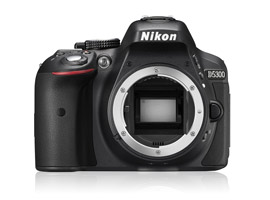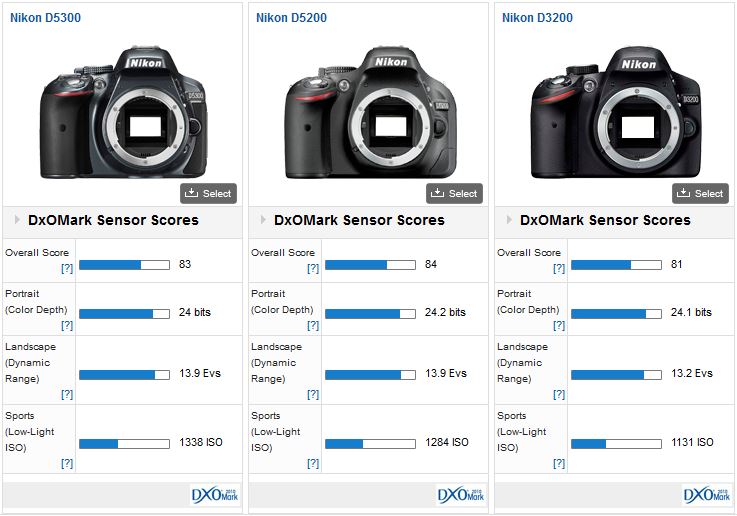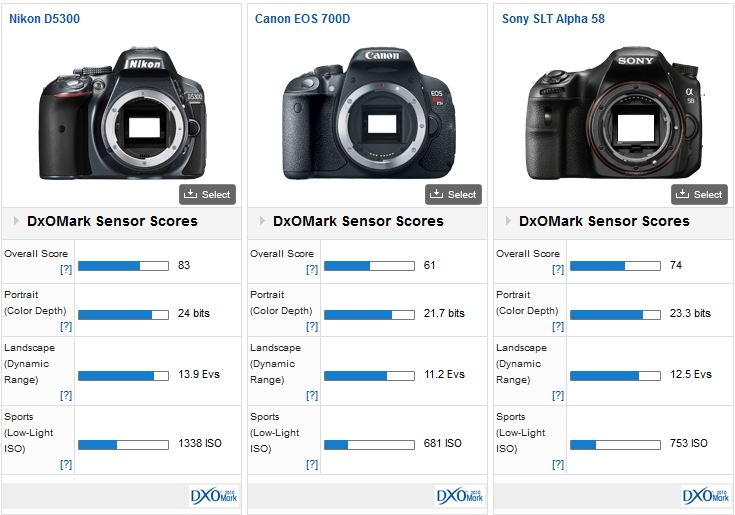Introduction
At $799 body only or $1,399 complete with the AF-S Nikkor 18-140mm f3.5-5.6G ED VR, the mid-to-high-end DX format Nikon D5300 is an upgrade of last year’s D5200.
The new model features the same 24-Mpix CMOS sensor minus the optical low pass filter (OLPF) for improved fine-detail rendering and image sharpness. It also has sensitivity settings running from 100 to 12,800 ISO plus expansion to 25600, and a slightly larger 3.2-inch articulated rear TFT display.
This new model also has the 39-point AF module and metering system from D7000 and is the first DSLR from the firm to include built-in WiFi capture and image transfer options as well as GPS tagging.
Additionally, the Nikon D5300 has improved video capabilities with full HD 1920 x 1080p capture up to 60 fps complete with full-time AF and subject tracking.
With a DxOMark Sensor score of 83 points, the new Nikon D5300 performs very well and is typical of current Nikon sensors generally. Indeed it sits in 12th place overall in our database and ranks just ahead of the full-frame Nikon D3s and medium format Pentax 645D, and level with the Nikon D7100. The new model has excellent color depth, a wide dynamic range of just under 14Evs, and it achieves a very respectable 1338 ISO low light score.
Compared with its predecessor using a similar sensor (albeit with AA filter), the D5300 shows very little variation, which is not unexpected.
Compared to the 18-Mpix Canon EOS 700D (Rebel T5i) and the Sony SLT Alpha 58 with its 20.1-Mpix CMOS sensor, the Nikon D5300 has the equivalent to a +1 and 1/3 stop improvement in IQ over the former and +2/3rds of a stop gain over the latter.
Looking more closely at the individual metrics, the D5300 has a substantial +1 1/2-stop gain in color depth over the Canon, and a still sizeable ½ stop over the Sony at base ISO.
This advantage extends to higher ISOs as well, with the D5300 achieving almost the same +1/1/2 stop advantage over both at ISO3200.
Although the D5300 also has an advantage with DR at high ISOs, it’s at the base setting where the new model shows a substantial lead of +2.7 Evs over the Canon and +1.5 Evs over the Sony.
Low light capabilities are very similar between the Canon EOS 700D and the Sony SLT A58 but even in this the new Nikon shows a meaningful improvement.
Compared with rival models from Sony and Canon, the D5300 maintains a competitive advantage in color depth, DR and low light capabilities, and that’s before assessing the effects on image sharpness from a higher pixel count and from removing the AA filter. When considered against its predecessor, or even the pricier D7100, the new model’s sensor performs similarly and so the iterative improvements in specification make the D5300 look very tempting, especially if on a budget.









DXOMARK encourages its readers to share comments on the articles. To read or post comments, Disqus cookies are required. Change your Cookies Preferences and read more about our Comment Policy.